Experimental Investigation of ECC Jackets for Repair of Pre-Damaged R.C. Members under Monotonic Loading
Abstract
1. Introduction
2. Experimental Program
2.1. Experimental Setup
2.2. Parameters of the Test Specimens
2.3. Specimen Design
2.4. Material Properties
2.5. Retrofitting Procedure
2.6. Repair Material
2.7. Instrumentation
3. Observed Experimental Response
3.1. Damage Profiles and Resistance Curves
3.2. Evaluation of the Flexural Strength of the Specimens
3.3. Envelope Resistance Curves
4. Conclusions
Author Contributions
Funding
Institutional Review Board Statement
Informed Consent Statement
Data Availability Statement
Acknowledgments
Conflicts of Interest
Appendix A
| = | |
| = |
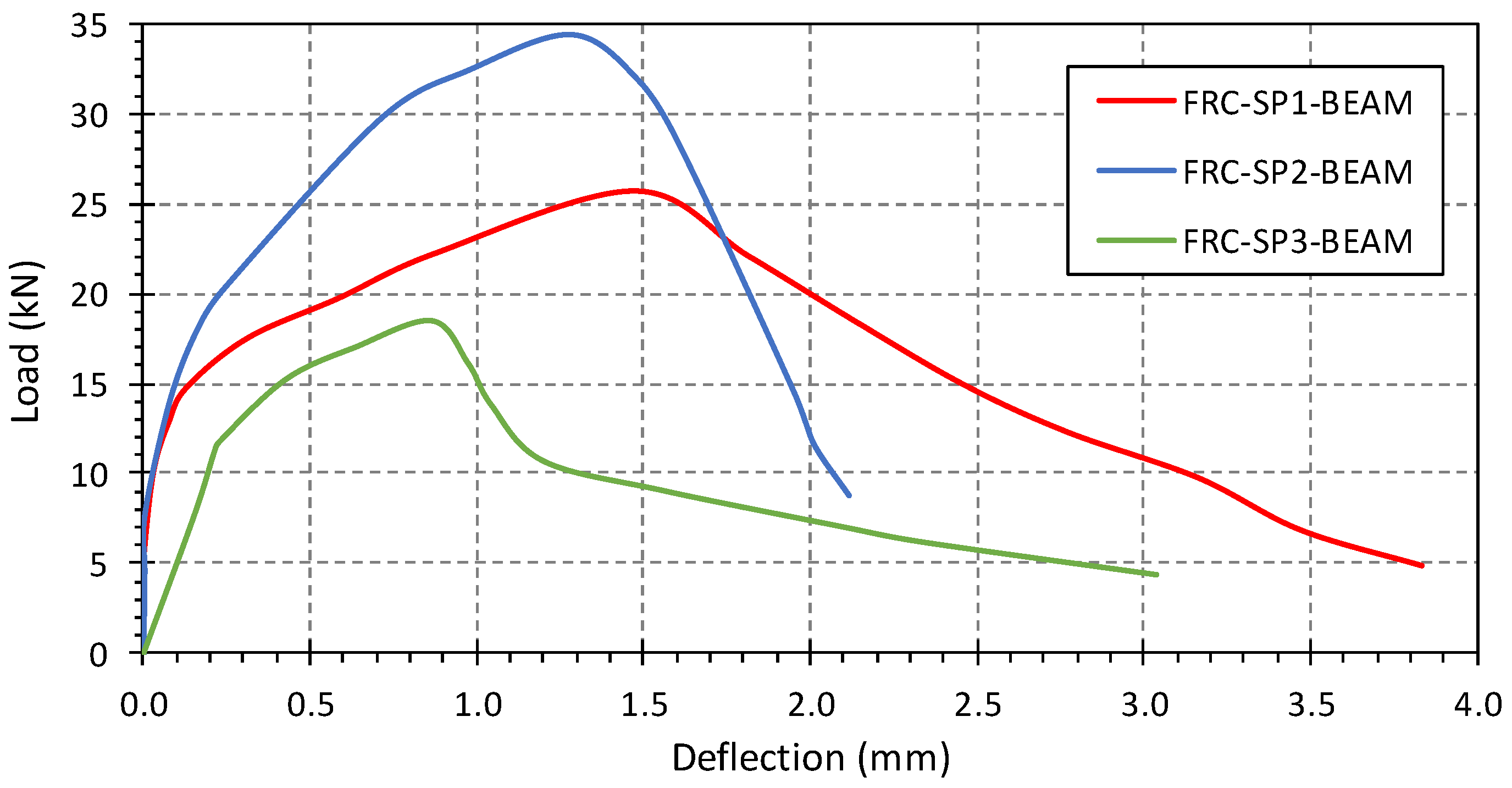
References
- Thermou, G.E.; Pantazopoulou, S.J. Metallic Fabric Jackets: An Innovative Method for Seismic Retrofitting of Substandard RC Prismatic Members. Struct. Concr. 2007, 8, 35–46. [Google Scholar] [CrossRef]
- Rodriguez, M.; Park, R. Seismic Load Tests on Reinforced Concrete Columns Strengthened by Jacketing. ACI Struct. J. 1994, 91, 150–159. [Google Scholar]
- Chai, Y.H.; Priestley, M.J.N.; Seible, F. Analytical Model for Steel-Jacketed RC Circular Bridge Columns. J. Struct. Eng. 1994, 120, 2358–2376. [Google Scholar] [CrossRef]
- Vandoros, K.G.; Dritsos, S.E. Concrete jacket construction detail effectiveness when strengthening RC columns. Constr. Build. Mater. 2008, 22, 264–276. [Google Scholar] [CrossRef]
- Raza, S.; Khan, M.K.I.; Menegon, S.J.; Tsang, H.-H.; Wilson, J.L. Strengthening and Repair of Reinforced Concrete Columns by Jacketing: State-of-the-Art Review. Sustainability 2019, 11, 3208. [Google Scholar] [CrossRef]
- Parvin, A.; Wang, W. Behavior of FRP Jacketed Concrete Columns under Eccentric Loading. J. Compos. Constr. 2001, 5, 146–152. [Google Scholar] [CrossRef]
- Thermou, G.E.; Papanikolaou, V.K.; Hajirasouliha, I. Structural Performance of RC Columns Retrofitted with Steel-Reinforced Grout Jackets Under Combined Axial and Lateral Loading. Eng. Struct. 2021, 266, 113796. [Google Scholar]
- Thermou, G.E.; Pantazopoulou, S.J. Fiber-Reinforced Polymer Retrofitting of Predamaged Substandard RC Prismatic Members. J. Compos. Constr. 2009, 13, 535–546. [Google Scholar] [CrossRef]
- Funari, M.F.; Spadea, S.; Fabbrocino, F.; Luciano, R.A. Moving Interface Finite Element Formulation to Predict Dynamic Edge Debonding in FRP-Strengthened Concrete Beams in Service Conditions. Fibers 2020, 8, 42. [Google Scholar] [CrossRef]
- Funari, M.F.; Verre, S. The Effectiveness of the DIC as a Measurement System in SRG Shear Strengthened Reinforced Concrete Beams. Crystals 2021, 11, 265. [Google Scholar] [CrossRef]
- Thermou, G.E.; Pantazopoulou, S.J.; Elnashai, A.S. Design Methodology for Seismic Upgrading of Substandard Reinforced Concrete Structures. J. Earthq. Eng. 2007, 11, 582–606. [Google Scholar] [CrossRef]
- Massicotte, B.; Boucher-Proulx, G. Seismic Retrofitting of Bridge Piers with UHPFRC Jackets. Des. Build. UHPFRC 2009, 531–540. [Google Scholar] [CrossRef]
- The European Union. EN 1992-1-2, 2004: Eurocode 2: Design of Concrete Structures—Part 1–2, 1st ed.; European Committee for Standardization (CEN): Brussels, Belgium, 2004. [Google Scholar]
- Georgiou, A. Characterization of the Structural Performance of Strain-Hardening Fiber Cementitious Composites. Ph.D. Thesis, University of Cyprus, Nicosia, Cyprus, May 2007. [Google Scholar]
- Georgiou, A.; Pantazopoulou, S.J. Performance of Ductile FRCC under Cyclic Loads and Non-Linear FE Simulation. In Proceedings of the FRC2018: Fibre Reinforced Concrete: From Design to Structural Applications Joint ACI-fib-RILEM International Workshop, Desenzano, Italy, 27–30 June 2018; pp. 310–320. [Google Scholar]
- The European Union. EN 1998-1, 2004: Eurocode 8: Design of Structures for Earthquake Resistance, 1st ed.; European Committee for Standardization (CEN): Brussels, Belgium, 2004. [Google Scholar]
- Yang, Y.; Ismail, M.; Pantazopoulou, S.J.; Palermo, D. Tensile Behaviour of Ultra-High-Performance Steel Fibre Reinforced. Master’s Thesis, York University, Toronto, ON, Canada, December 2019. [Google Scholar]
- Canadian Highway Bridge Design Code 2019, 12th ed.; CSA Group: Toronto, ON, Canada, 2019; p. 1185.
- Martínez, J.Á.L. Characterization of the Tensile Behaviour of UHPFRC By Means of Four-Point Bending Tests. Ph.D. Thesis, Polytechnical School of Valencia, Valencia, Spain, March 2017. [Google Scholar]
- Hognestad, E. Study of Combined Bending and Axial Load in Reinforced Concrete Members; Technical Report of an Investigation; University of Illinois at Urbana Champaign Bulletin: Champaign, IL, USA, 1951. [Google Scholar]
- Park, R.; Priestley, M.N.; Gill, W.D. Ductility of Square-Confined Concrete Columns. J. Struct. Div. 1982, 108, 929–950. [Google Scholar] [CrossRef]
- Deng, M.; Zhang, Y.; Li, Q. Shear Strengthening of RC Short Columns with ECC Jacket: Cyclic Behavior Tests. Eng. Struct. 2018, 160, 535–545. [Google Scholar] [CrossRef]
- Shang, X.; Yu, J.; Li, L.; Lu, Z. Strengthening of RC Structures by Using Engineered Cementitious Composites: A Review. Sustainability 2019, 11, 3384. [Google Scholar] [CrossRef]
- Papavasileiou, G.S.; Charmpis, D.C.; Lagaros, N.D. Optimized Seismic Retrofit of Steel-Concrete Composite Buildings. Eng. Struct. 2020, 213, 110573. [Google Scholar] [CrossRef]

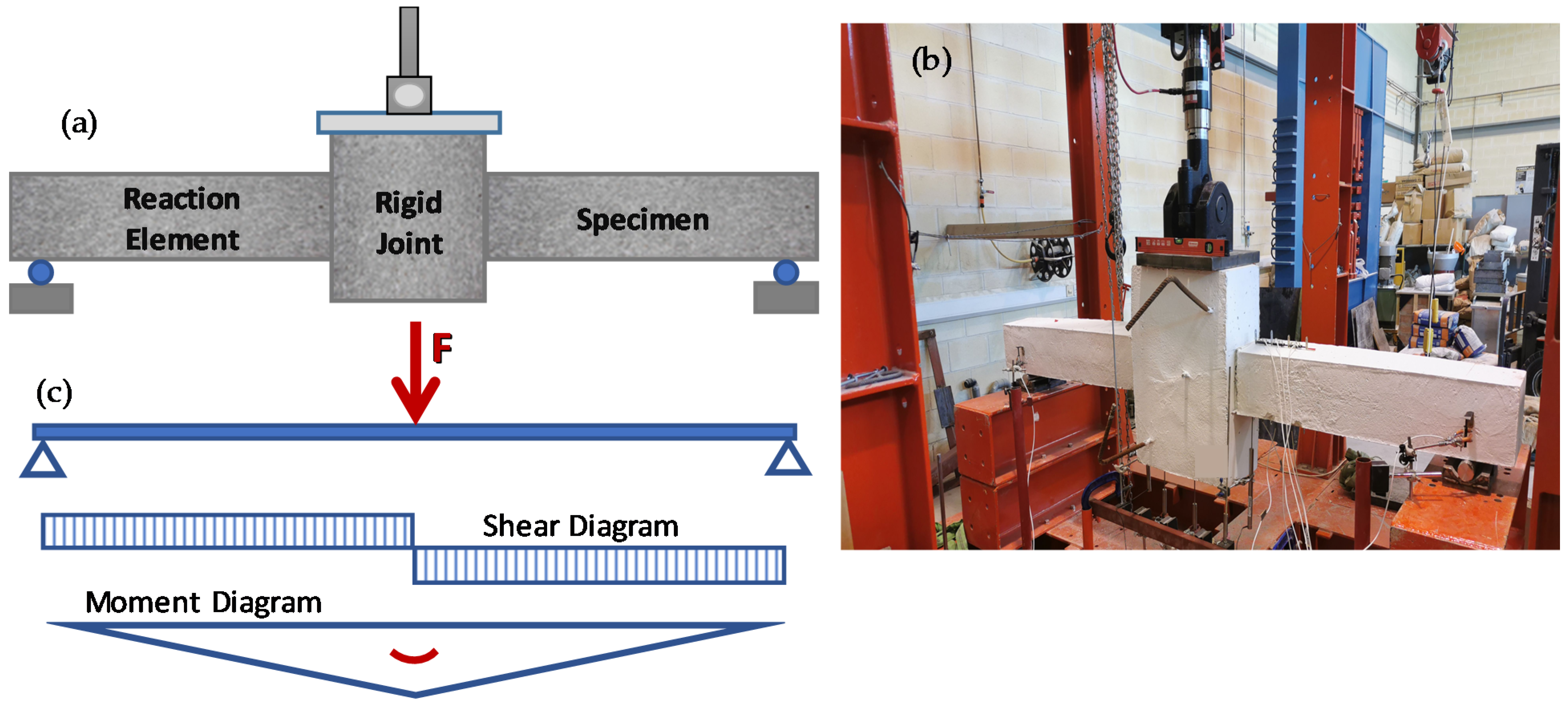
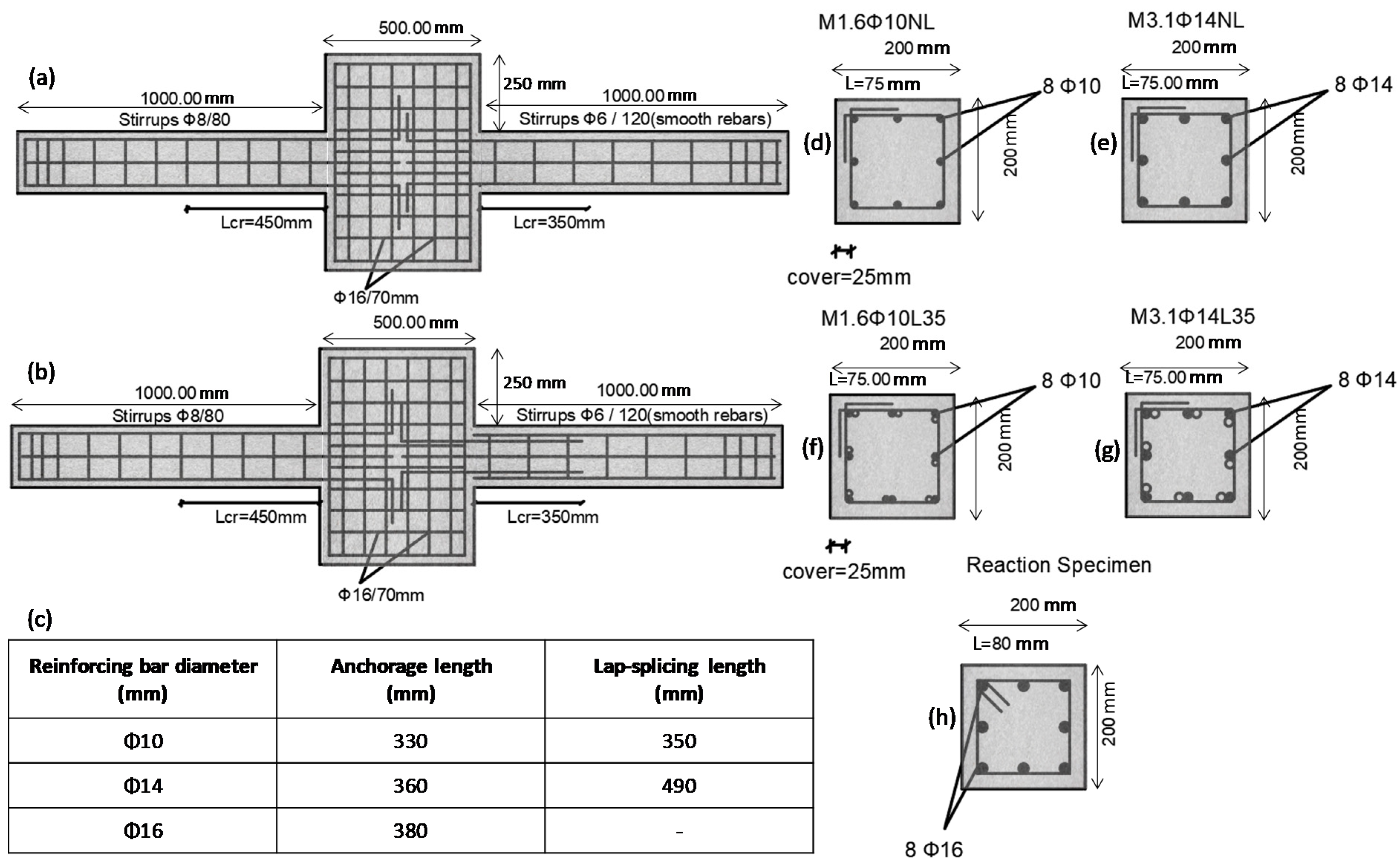
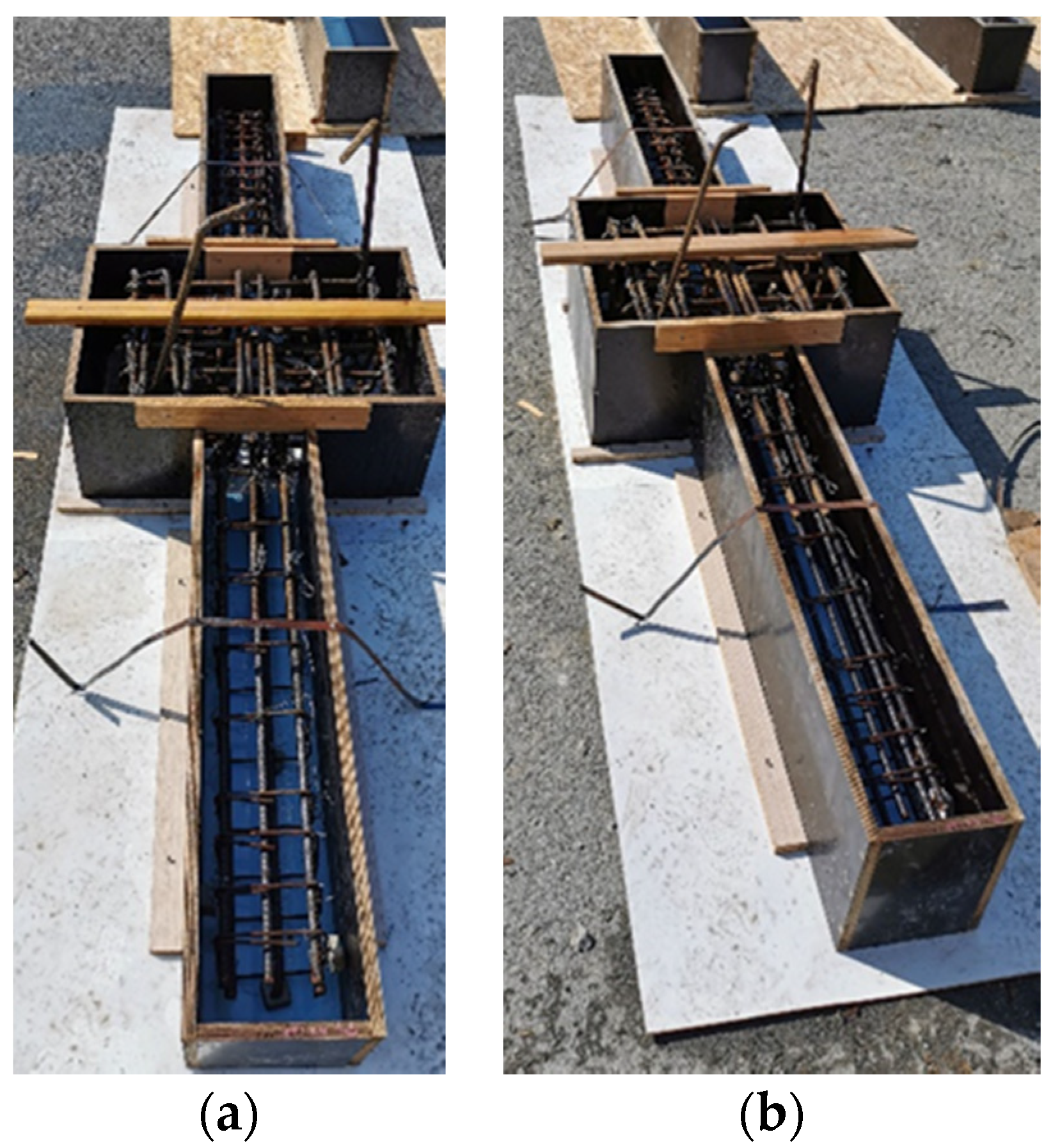
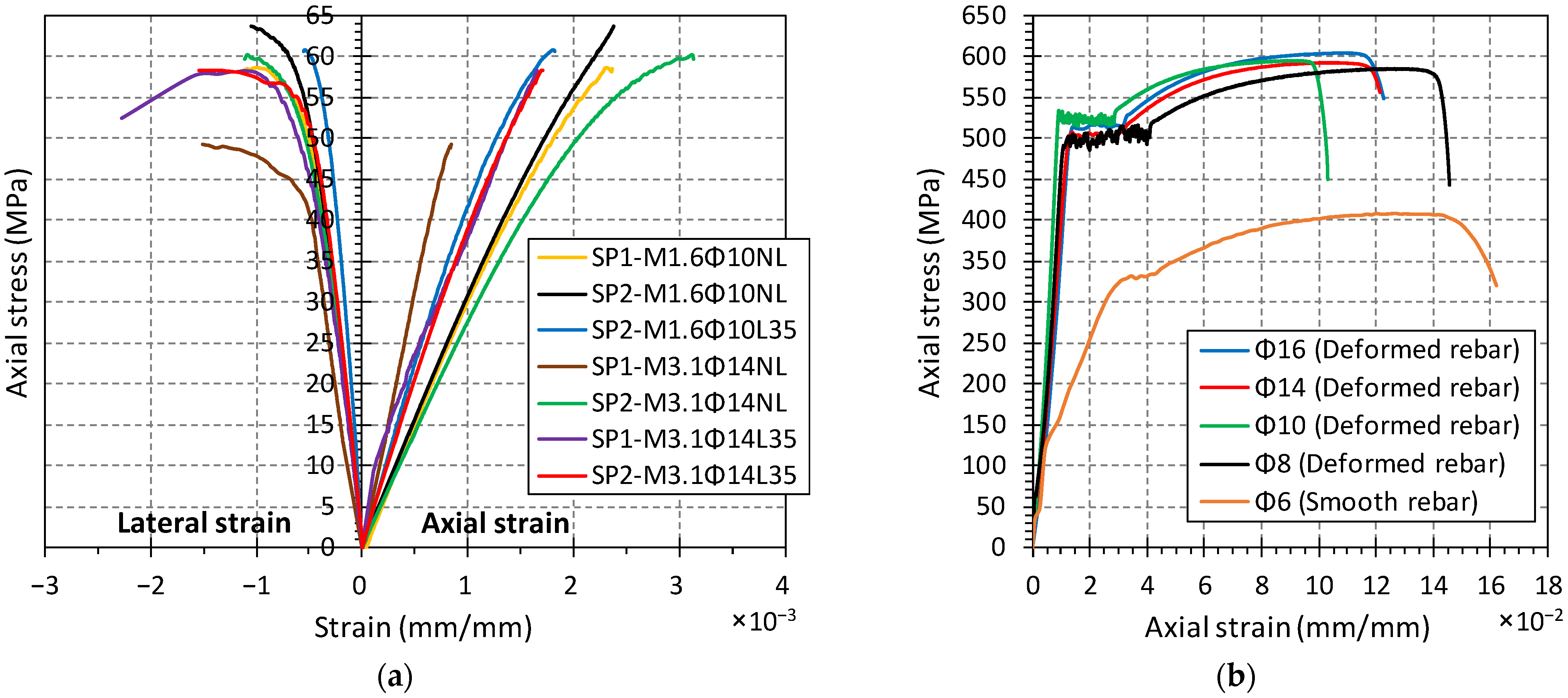

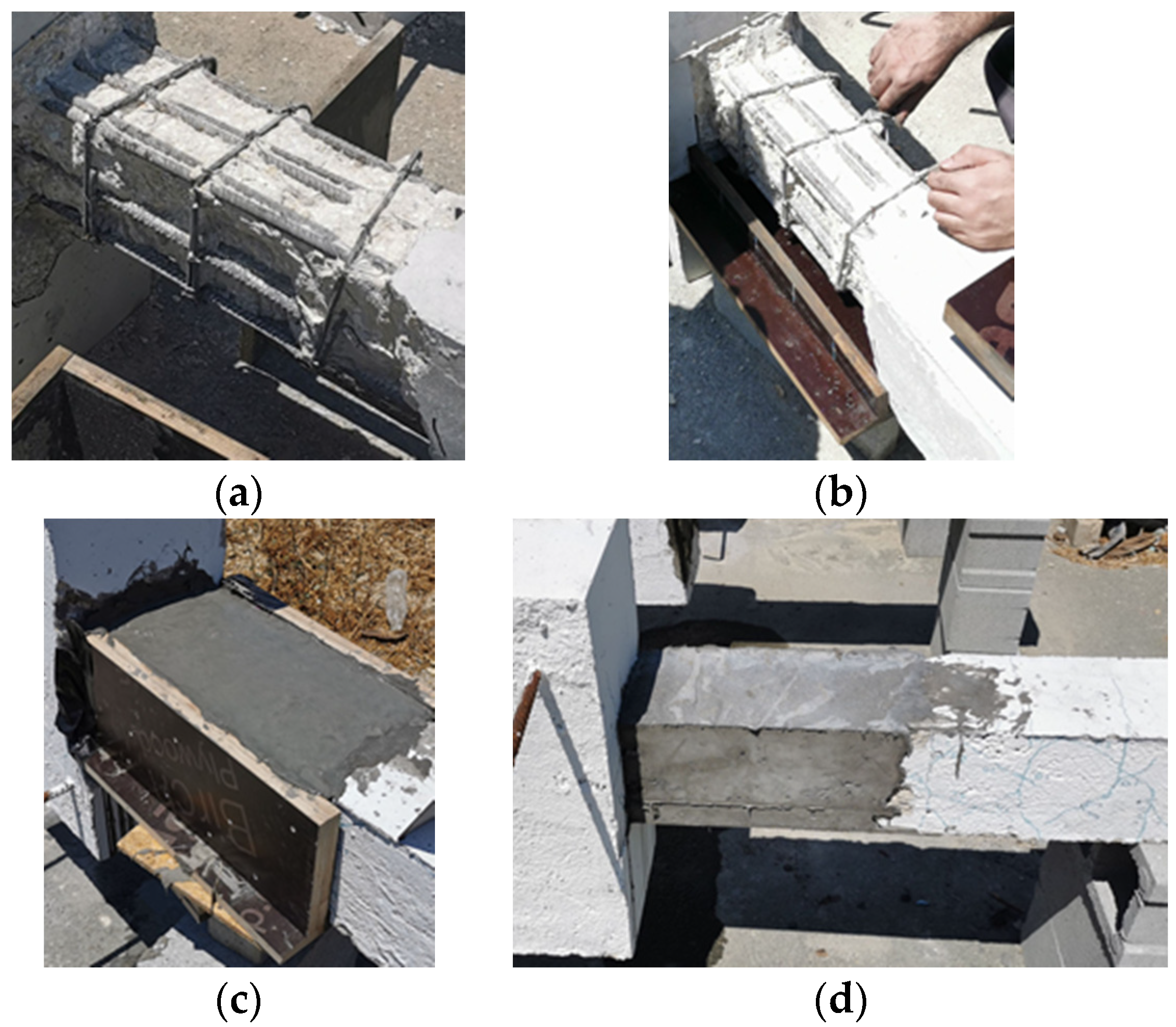
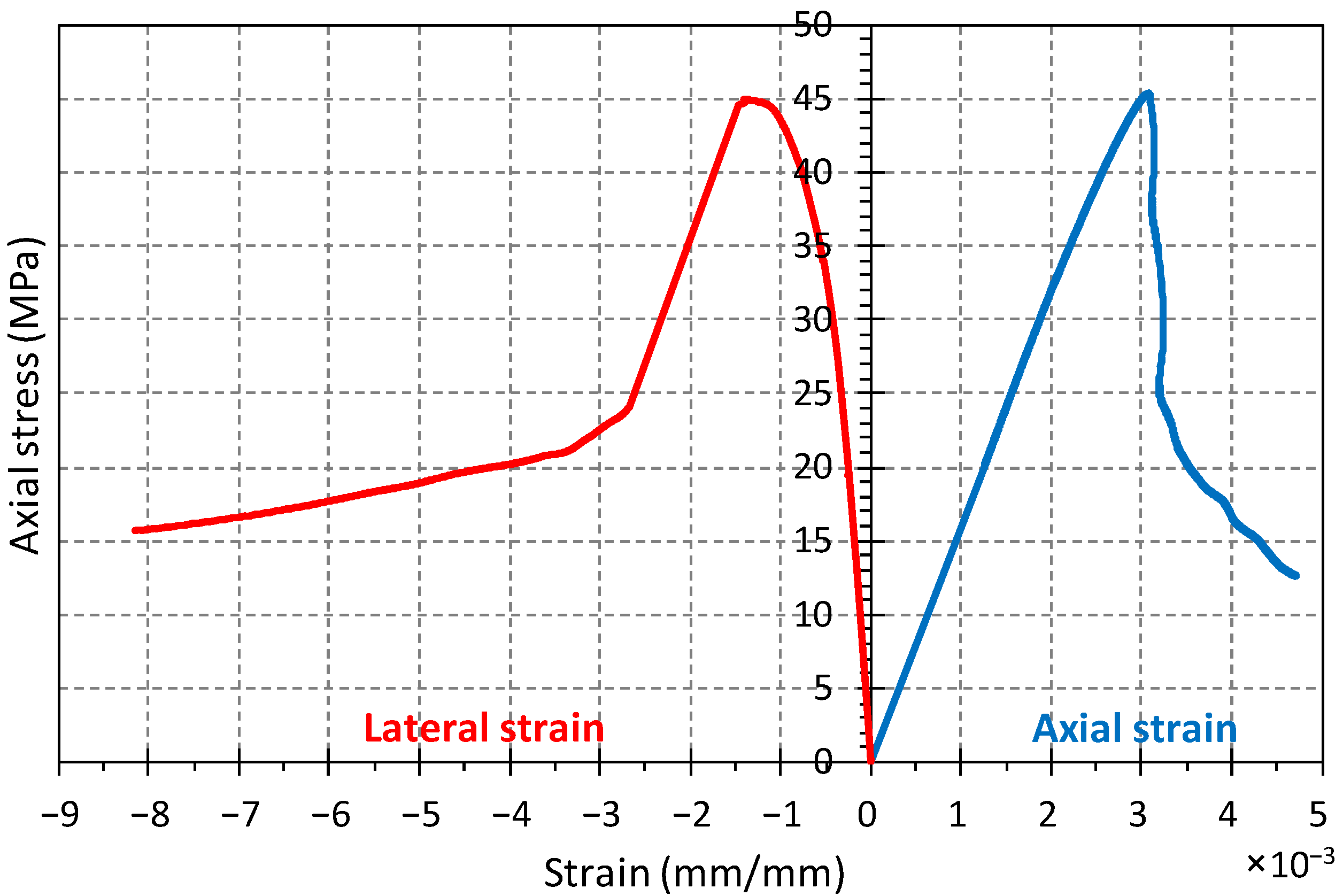
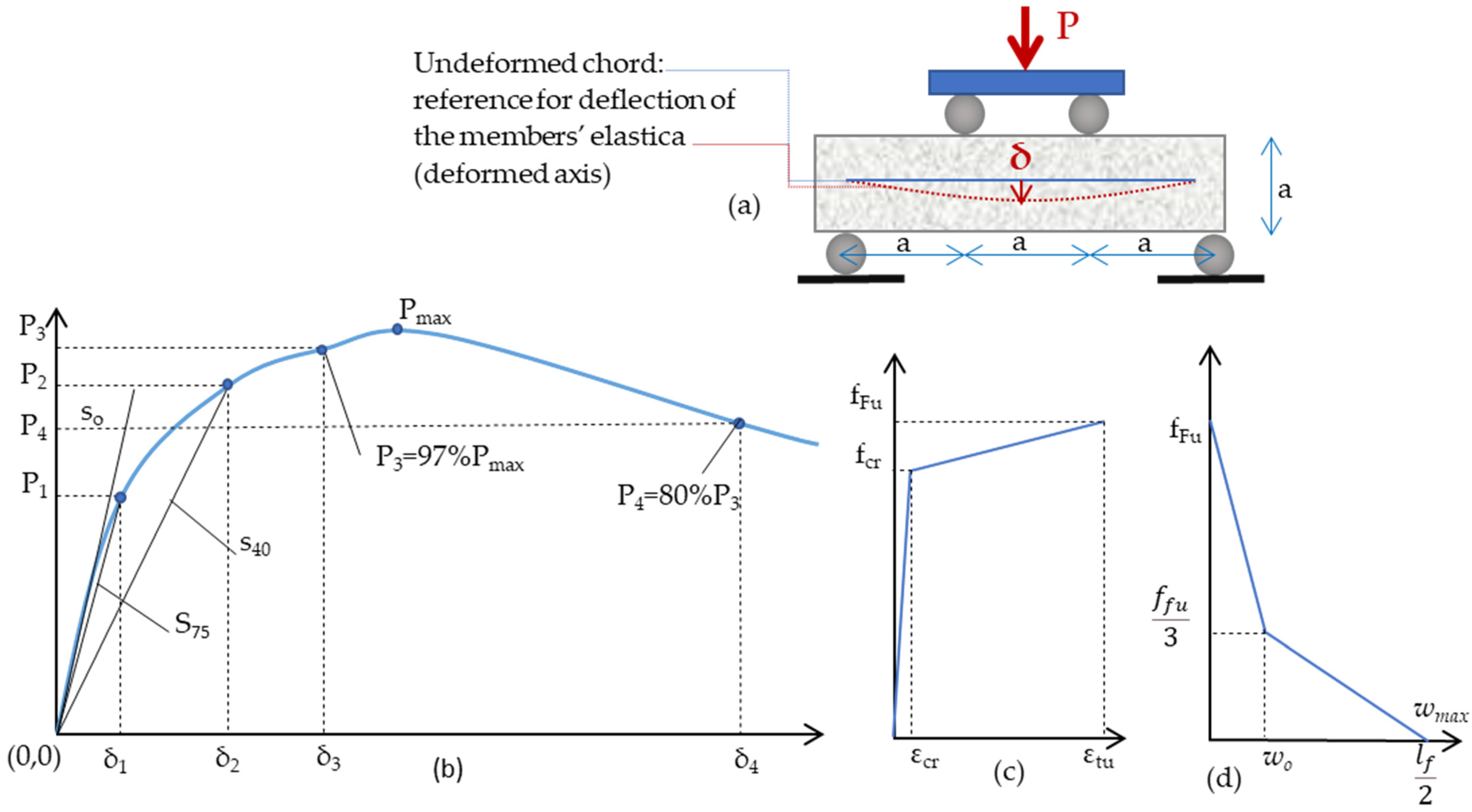
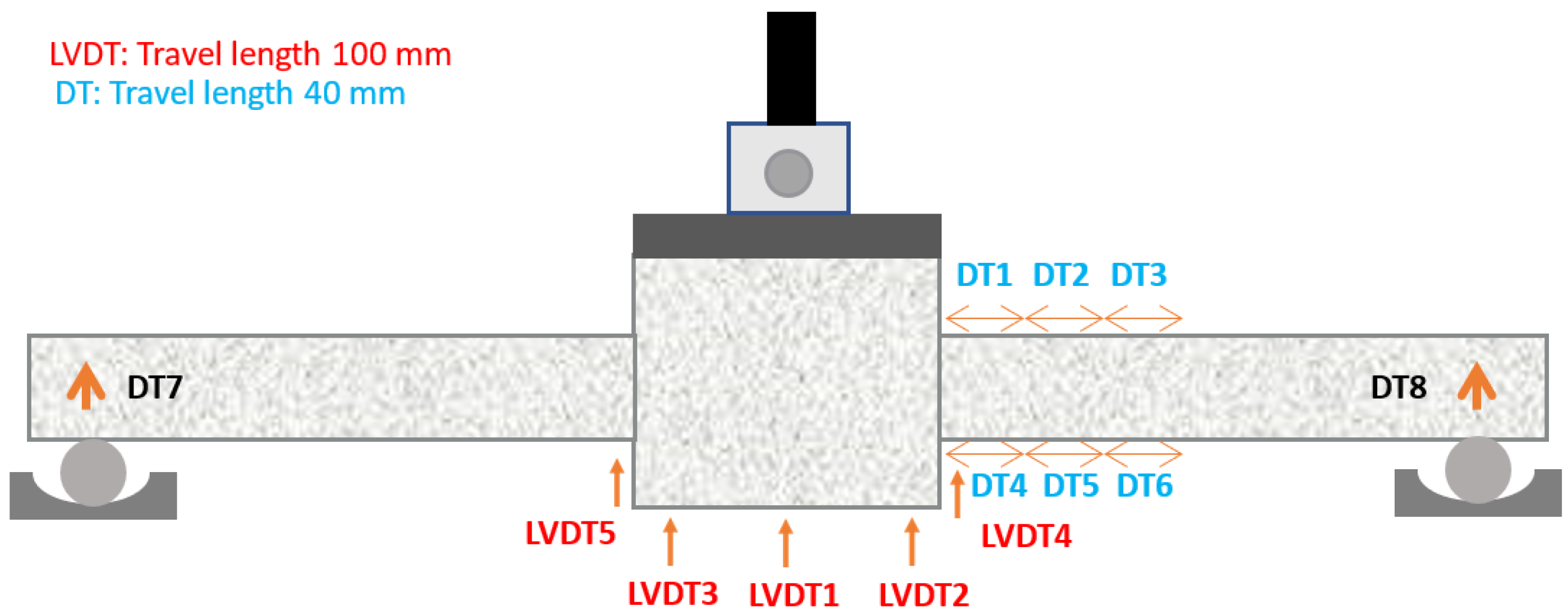

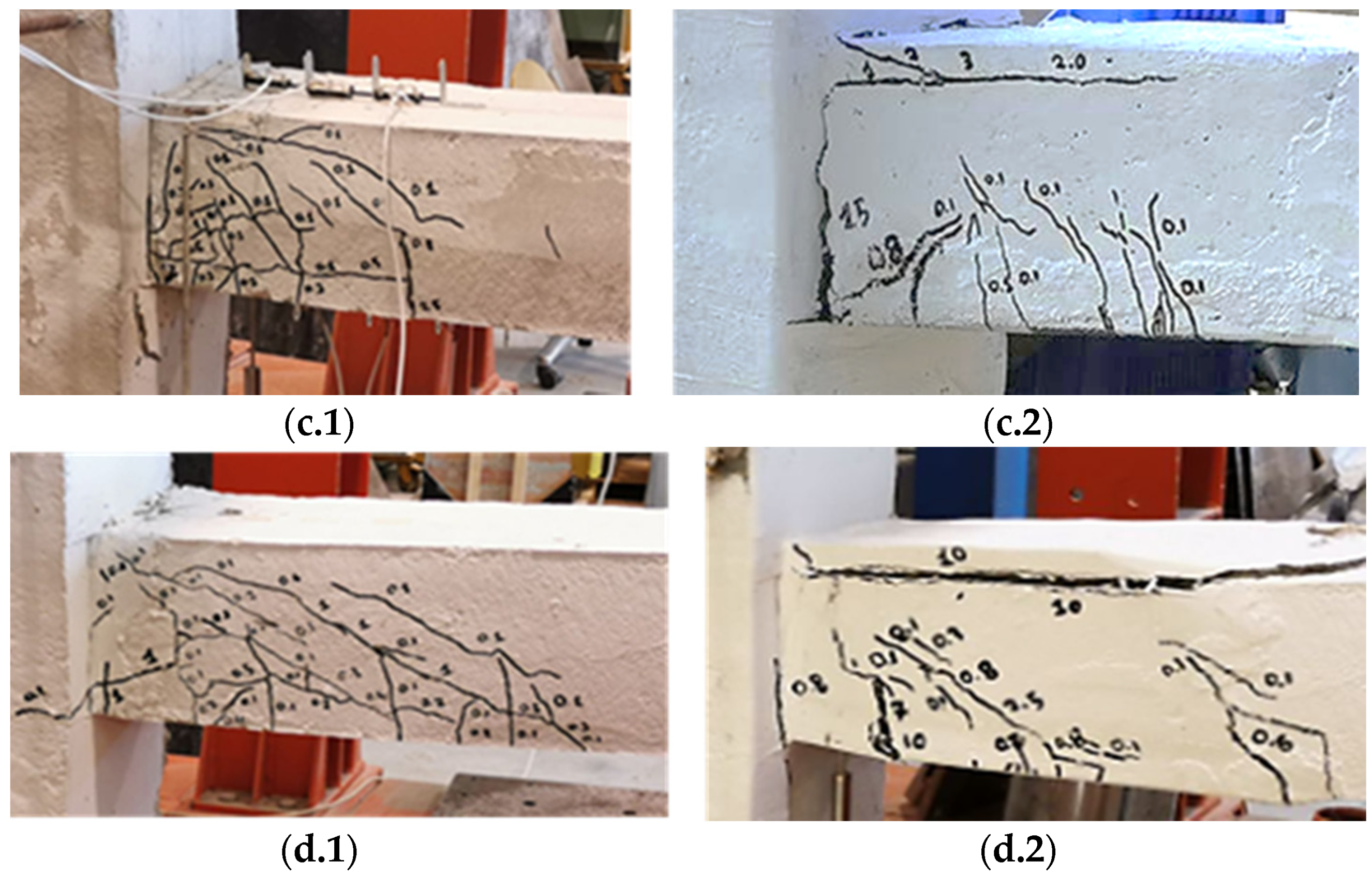
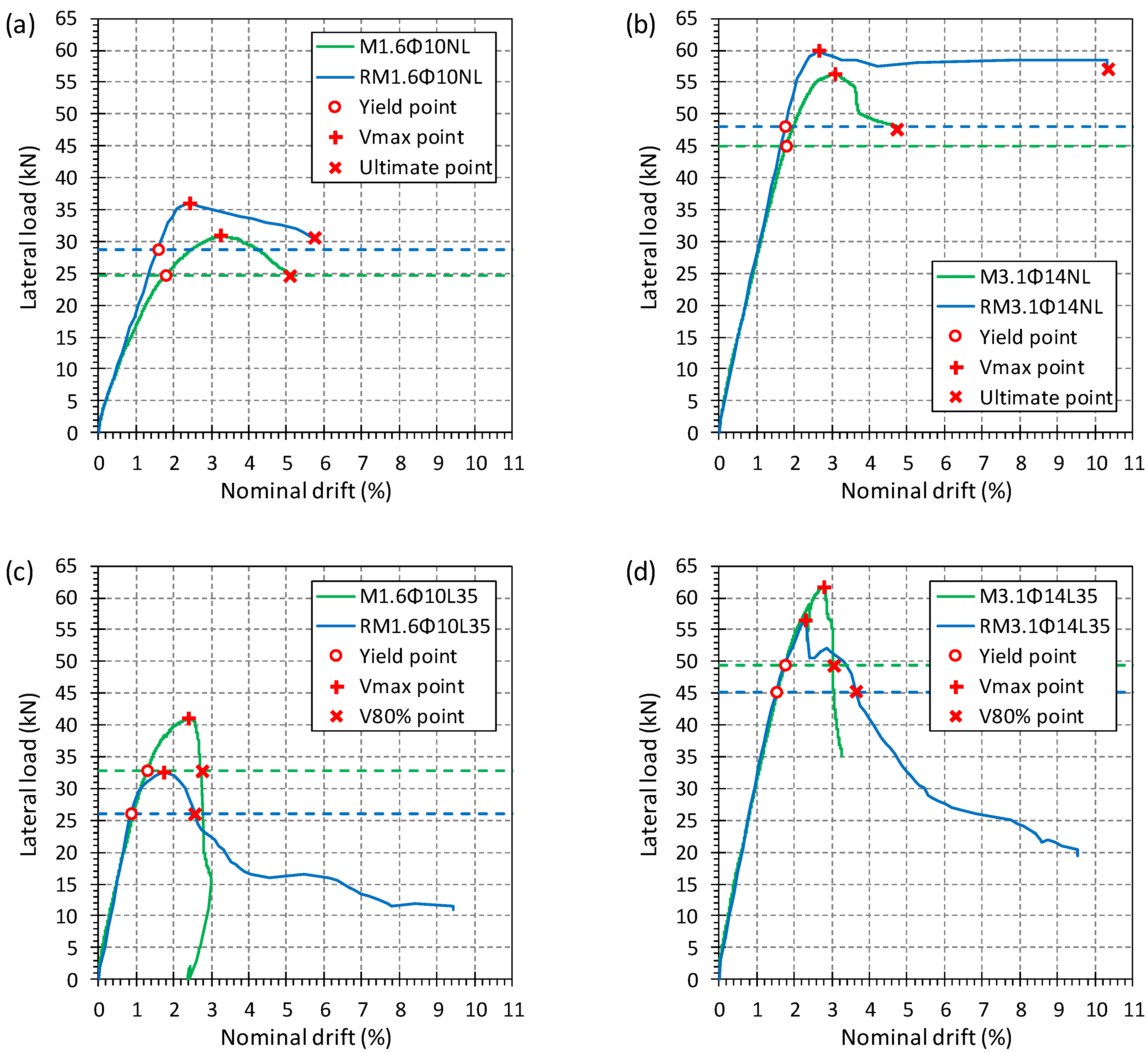

| Specimen Code | Condition | Longitudinal Reinf. Ratio, ρ | Bar Diameter Φ (mm) | No Lap-Splice (NL) | With Lap-Splice ℓo (in Φ Multiples) | |
|---|---|---|---|---|---|---|
| Initial | Repaired | |||||
| M1.6Φ10ΝL | √ | 1.6% | 8–Φ10 | √ | ||
| RM1.6Φ10ΝL | √ | 1.6% | 8–Φ10 | √ | ||
| M1.6Φ10L35 | √ | 1.6% | 8–Φ10 | 35∙Φ | ||
| RM1.6Φ1035 | √ | 1.6% | 8–Φ10 | 35∙Φ | ||
| M3.1Φ14ΝL | √ | 3.1% | 8–Φ14 | √ | ||
| RM3.1Φ14ΝL | √ | 3.1% | 8–Φ14 | √ | ||
| M3.1Φ14L35 | √ | 3.1% | 8–Φ14 | 35∙Φ | ||
| RM3.1Φ14L35 | √ | 3.1% | 8–Φ14 | 35∙Φ | ||
| Materials | Quantity (kg/m3) | Specimen ID | fc′ (MPa) |
|---|---|---|---|
| Cement | 352 | M1.6Φ10ΝL | 61.20 |
| Water | 211 | M3.1Φ14NL | 54.75 |
| Sand (0–4 mm) | 828 | M1.6Φ10L35 | 61.45 |
| Gravel (4–10 mm) | 1004 | M3.1Φ14L35 | 58.30 |
| Superplasticizer | 6 |
| Materials | Quantity (kg/m3) |
|---|---|
| Cement | 530 |
| Water | 372 |
| Fly Ash | 636 |
| Silica Sand | 425 |
| PVA Fibers (12 mm, dtex 39) | 16.25 |
| Superplasticizer | 13 |
| Specimens | Vy (kN) | θy (%) | Vmax (kN) | θmax (%) | V80% (kN) | θ80 (%) | μ | θ80/θy |
|---|---|---|---|---|---|---|---|---|
| M1.6Φ10ΝL | 24.7 | 1.8 | 30.9 | 3.3 | 24.7 | 5.1 | 2.8 | - |
| RM1.6Φ10ΝL | 28.8 | 1.6 | 36.0 | 2.4 | 30.5 | 5.7 | 3.6 | - |
| M3.1Φ14ΝL | 45.0 | 1.8 | 56.2 | 3.1 | 47.6 | 4.7 | 2.6 | - |
| RM3.1Φ14ΝL | 48.0 | 1.8 | 60.0 | 2.6 | 57.0 | 10.3 | 5.7 | - |
| M1.6Φ10L35 | 32.8 | 1.3 | 41.0 | 2.4 | 32.8 | 2.7 | 2.3 | 2.1 |
| RM1.6Φ10L35 | 26.0 | 0.9 | 32.5 | 1.7 | 26.0 | 2.6 | 10.5 | 2.9 |
| M3.1Φ14L35 | 49.4 | 1.7 | 61.7 | 2.8 | 49.4 | 3.0 | 1.9 | 1.8 |
| RM3.1Φ14L35 | 45.2 | 1.5 | 56.5 | 2.3 | 45.2 | 3.6 | 6.4 | 2.4 |
Publisher’s Note: MDPI stays neutral with regard to jurisdictional claims in published maps and institutional affiliations. |
© 2021 by the authors. Licensee MDPI, Basel, Switzerland. This article is an open access article distributed under the terms and conditions of the Creative Commons Attribution (CC BY) license (https://creativecommons.org/licenses/by/4.0/).
Share and Cite
Ioannou, A.I.; Pantazopoulou, S.J.; Petrou, M.F.; Charmpis, D.C. Experimental Investigation of ECC Jackets for Repair of Pre-Damaged R.C. Members under Monotonic Loading. Buildings 2021, 11, 180. https://doi.org/10.3390/buildings11050180
Ioannou AI, Pantazopoulou SJ, Petrou MF, Charmpis DC. Experimental Investigation of ECC Jackets for Repair of Pre-Damaged R.C. Members under Monotonic Loading. Buildings. 2021; 11(5):180. https://doi.org/10.3390/buildings11050180
Chicago/Turabian StyleIoannou, Anthos I., Stavroula J. Pantazopoulou, Michael F. Petrou, and Dimos C. Charmpis. 2021. "Experimental Investigation of ECC Jackets for Repair of Pre-Damaged R.C. Members under Monotonic Loading" Buildings 11, no. 5: 180. https://doi.org/10.3390/buildings11050180
APA StyleIoannou, A. I., Pantazopoulou, S. J., Petrou, M. F., & Charmpis, D. C. (2021). Experimental Investigation of ECC Jackets for Repair of Pre-Damaged R.C. Members under Monotonic Loading. Buildings, 11(5), 180. https://doi.org/10.3390/buildings11050180







